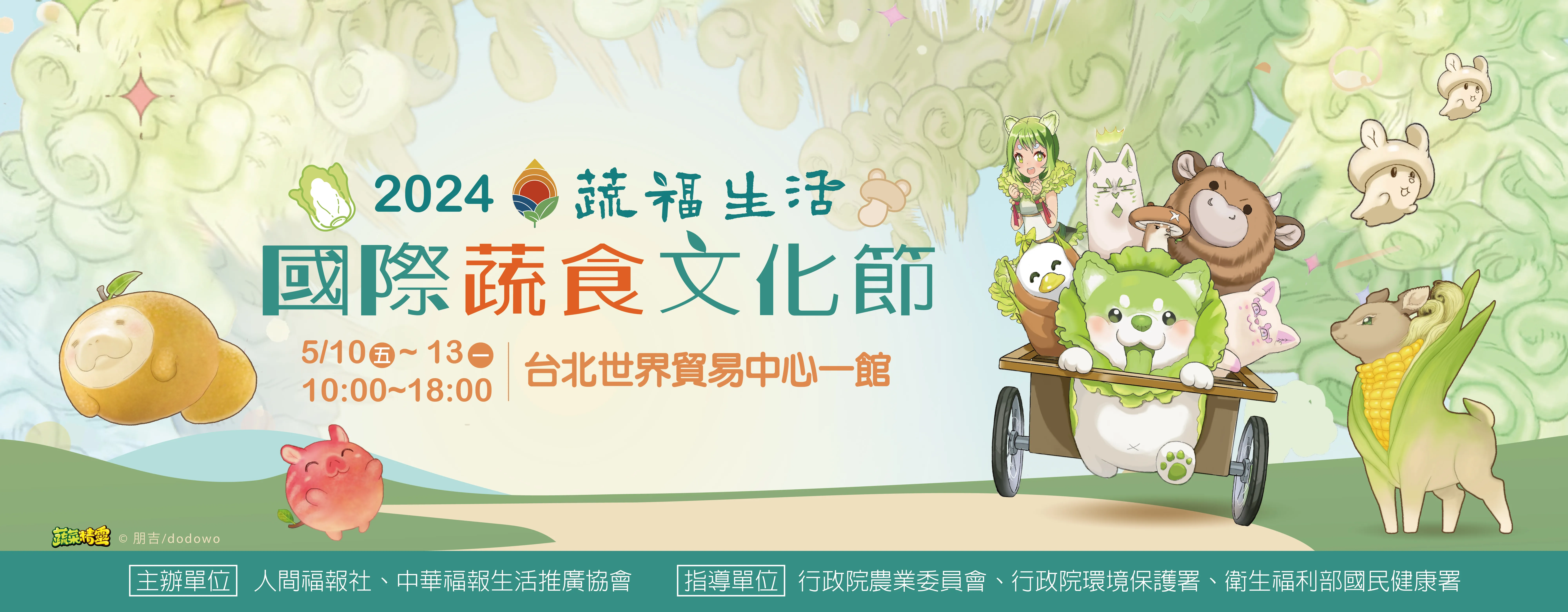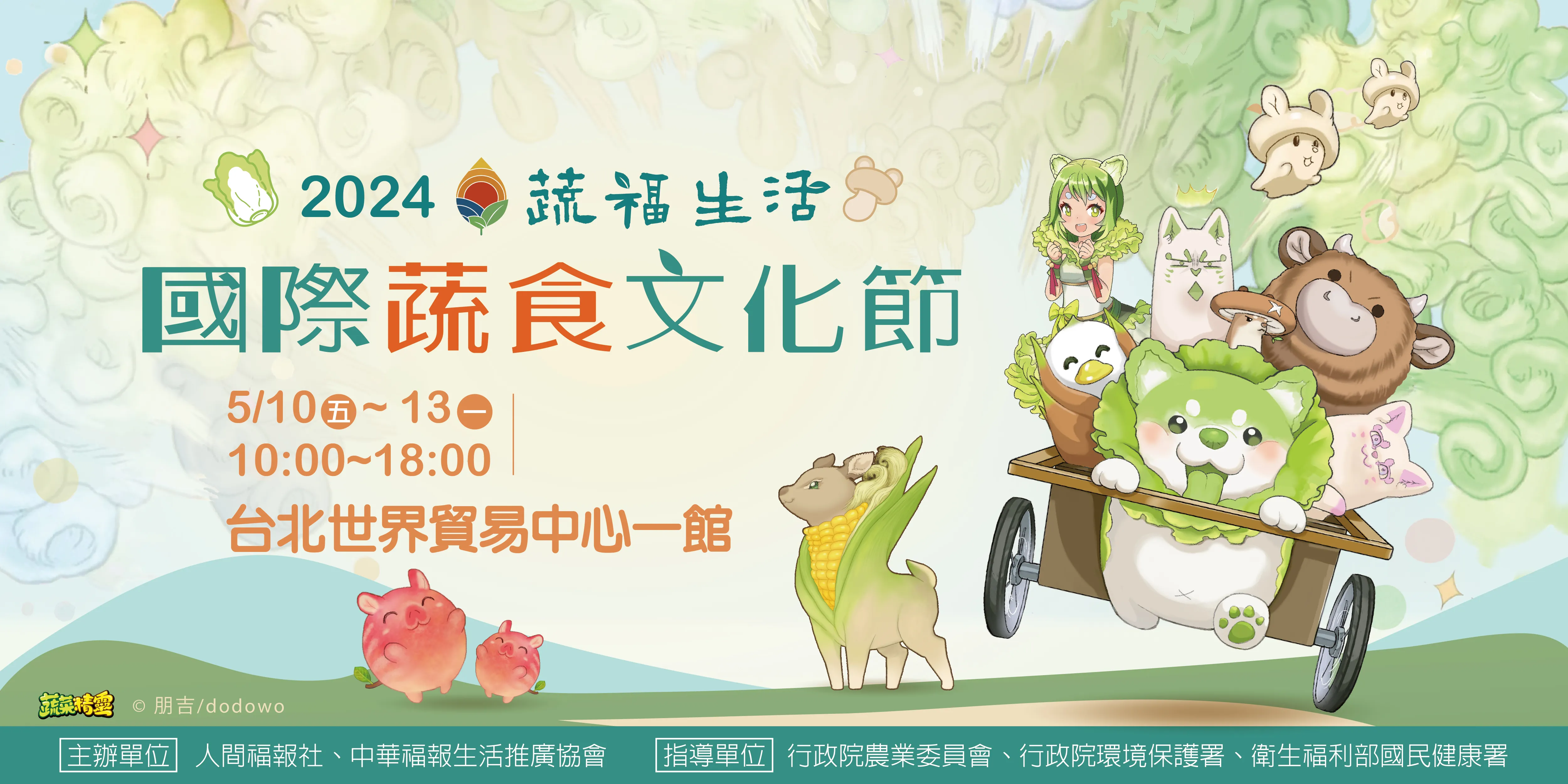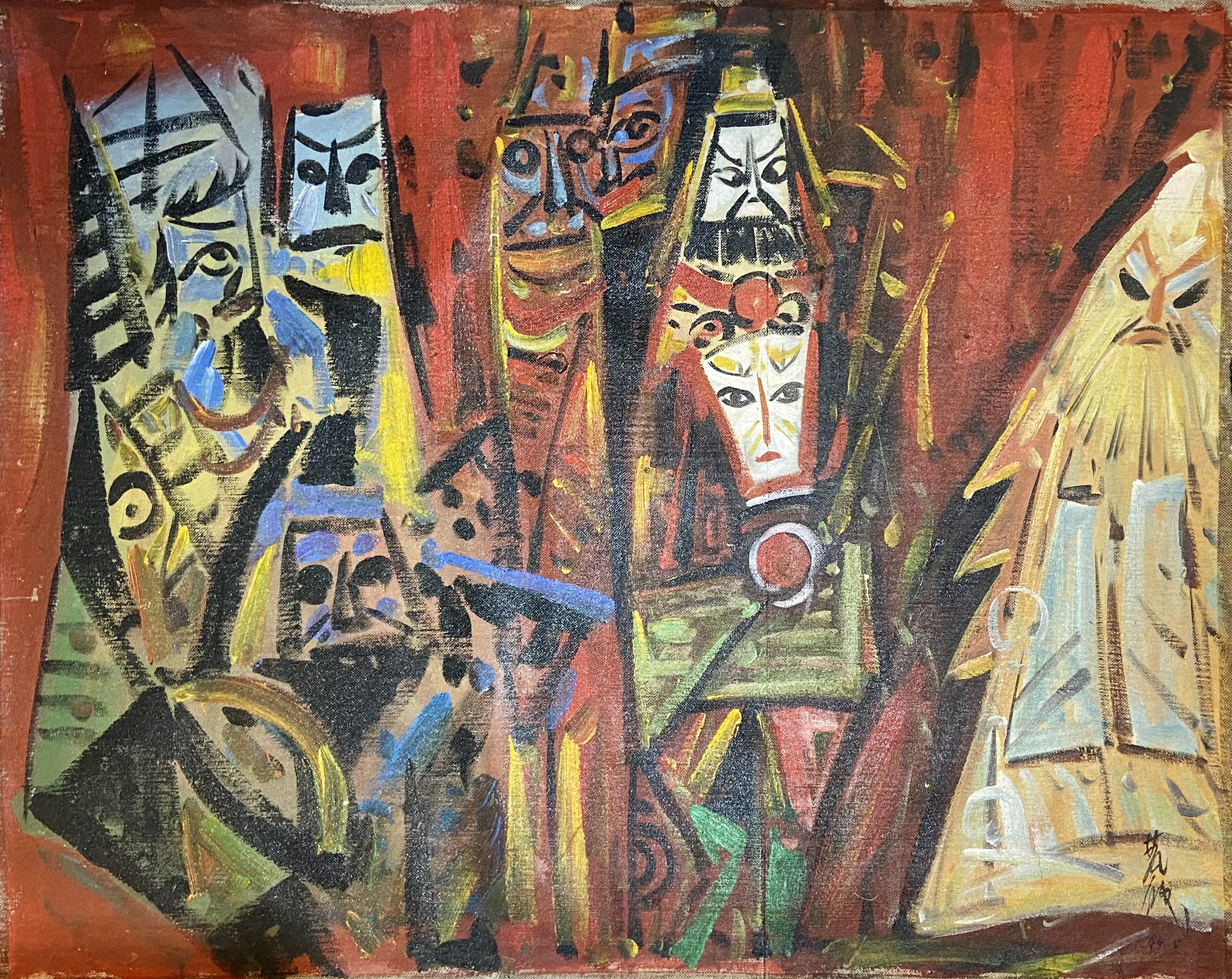


| 時代: | 西元1944年 A.D. 1944 |
| 尺寸: | 長度:約 91 cm 寬度:約 123 cm (未含外框) Length:91 cm Width:123 cm |
| 質地: | 油畫布Oil painting |
收藏人:歐陽廷相先生
此幅林風眠‟大鬧天宮”是林風眠先生44歲時創作,林風眠先生在法國遊學時深受馬諦斯為代表的野獸派影響,畫風強烈、用色大膽鮮豔,因此此畫中人物的臉譜、背景皆為重色,豐富且飽和。畫中依稀可見中央白面、戴冠的是孫悟空,右側白髮白髯、執圈而立的老者,應是手持法寶緊箍圈的太上老君,在他們周圍還隱現著藍色、紅色、黃色,或正臉、側臉的臉譜,粗重的墨線、墨塊與人物形體、動作相關,讓畫面更有動感,也象徵如漆黑夜;大紅、暗紅、黃色的色塊與線條就如火光,象徵孫悟空出逃時與諸天將眾神激戰之狀。除了黑、紅的形體與光焰,畫面上沒有一絲透氣空間,就如孫悟空大鬧天宮時與諸神風火相交,戰況激烈、劇情緊湊。畫中盡情扭曲、變形、疊加、組合各種幾何圖形,是林風眠先生的標準慣性畫風。此幅林風眠以水彩方式創作油畫,先以平塗法畫出色塊再用粗筆勾勒邊緣,最後以水粉(水彩作畫方式)勾勒人物髮冠裝飾等,線條力道十足、充滿彈性,勾勒之筆峰腕力十足、線條細膩,是為中峰之畫法,可見林風眠先生此時處於中、壯年時期,落筆時完全沒有猶豫,充分顯現出他畫油畫高深功力,許多仿作無法表現出來。此畫畫布的織法是創作大幅油畫時,當時常用的亞麻布,油畫顏料與近代有用丙烯塗底會上光的畫料不同,是林風眠先生慣用的調色方式,讓油畫顏料呈現出類似水彩的水粉感,因此油畫顏料因年代久遠氧化後,手觸之會稍微有脫色現象。此幅林風眠先生之落款,觀察其起筆與轉折處,為中、壯年時期之標準落款,「林」字的二豎筆先寫,再寫橫畫,寫「林」字最後一撇時會一起寫「風」字第一撇,簽名筆峰腕力十足,是林風眠先生標準的簽名。此幅是少見的林風眠大型油畫代表作之一。
The painting "Great Uproar in Heaven" by Mr. Lin Fengmian was created when he was 44 years old. During his studies in France, Mr. Lin Fengmian was deeply influenced by the Fauvist movement, represented by artists like Matisse. As a result, this artwork showcases a strong and vibrant style with bold and vivid colors. In the painting, both the facial features of the characters and the background are richly saturated with intense colors. Central to the composition, there is the vague figure of Sun Wukong, the Monkey King, wearing a crown. To his right stands an elderly figure with white hair and a white beard, holding a magical weapon—the elder Taoist deity Taishang Laojun. Surrounding them are traces of blue, red, and yellow, showing both full and profile faces. The bold ink lines and ink blocks are connected to the figures' forms and movements, creating a sense of dynamism in the artwork, akin to the darkness of night. The large red, dark red, and yellow color blocks and lines resemble flames, symbolizing Sun Wukong's intense battle with the gods during his escape. Apart from the black and red figures and the fiery light, there's no breathing space in the composition. This mirrors the intense battle between Sun Wukong and the heavenly gods, where the clash is fierce and the drama is tightly packed. The painting distorts, transforms, overlaps, and combines various geometric shapes freely—a hallmark of Lin Fengmian's characteristic painting style. In this work, Lin Fengmian used a watercolor approach to create an oil painting. He first painted the color blocks using flat strokes, outlined the edges with bold brushstrokes, and then used gouache (a watercolor technique) to depict details like hair and decorations on the figures. The lines are forceful and elastic, demonstrating his mastery of the "zhongfeng" (central peak) technique in Chinese painting. It's evident that during this period of his life, Lin Fengmian was in his prime, displaying confidence in his brushwork and showcasing his profound skill in oil painting that many imitations fail to capture.
The canvas of this painting was woven in the traditional method commonly used for creating large-scale oil paintings during that time, using linen fabric. Unlike modern acrylic-based paints that require underpainting and varnish, Lin Fengmian employed his preferred mixing technique for oil paints, giving them a watercolor-like texture. Due to the aging of the oil pigments over time, there's a slight fading when touched. The inscription on this painting by Lin Fengmian, upon close observation of its brushstrokes and transitions, is consistent with his standard style during his prime years. The vertical strokes of the character "林" (Lin) are written first, followed by the horizontal stroke, and the last stroke of "林" combines with the first stroke of "風" (Feng). The signature exhibits powerful brushstrokes and wrist strength, conforming to Lin Fengmian's customary signature. This painting is a rare representative piece of Lin Fengmian's large-scale oil works.
.png)
- 常玉‟盆菊與蝶(120號)” San Yu "Chrysanthemums and Butterflies (No. 120)"
- 林風眠‟寶蓮燈”
- 林風眠‟楊門女將穆桂英” Mr. Lin Fengmian " Mu Guiying, the Female General of the Yang Family "
- 常玉‟盆中的果樹(120號)” San Yu "Fruit Trees in a Pot (No. 120)"
- 常玉‟青花盆中的粉菊(120號)” San Yu "Pink Chrysanthemums in a Blue and White Pot" (No. 120)
- 常玉‟花團錦簇(120號)” San Yu "Abundance of Flowers" (No. 120)
- 林風眠油畫‟京劇關羽與趙雲(漢津口)” Mr. Lin Fengmian "Peking Opera: Guan Yu and Zhao Yun (Han Jin Gate)"
- 常玉‟紅底盆菊(120號)” San Yu " Red-Based Chrysanthemums in a Pot (No. 120)"
- 林風眠‟四美圖”
- 常玉‟向陽白牡丹(120號)” San Yu " White Peonies Facing the Sun (No. 120)"
- 常玉‟盆菊與蝶(120號)” San Yu "Chrysanthemums and Butterflies (No. 120)"
- 林風眠‟寶蓮燈”
- 林風眠‟楊門女將穆桂英” Mr. Lin Fengmian " Mu Guiying, the Female General of the Yang Family "
- 常玉‟盆中的果樹(120號)” San Yu "Fruit Trees in a Pot (No. 120)"
- 常玉‟青花盆中的粉菊(120號)” San Yu "Pink Chrysanthemums in a Blue and White Pot" (No. 120)
- 常玉‟花團錦簇(120號)” San Yu "Abundance of Flowers" (No. 120)
- 林風眠油畫‟京劇關羽與趙雲(漢津口)” Mr. Lin Fengmian "Peking Opera: Guan Yu and Zhao Yun (Han Jin Gate)"
- 常玉‟紅底盆菊(120號)” San Yu " Red-Based Chrysanthemums in a Pot (No. 120)"
- 林風眠‟四美圖”
- 常玉‟向陽白牡丹(120號)” San Yu " White Peonies Facing the Sun (No. 120)"
